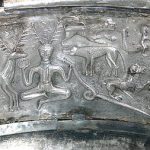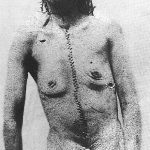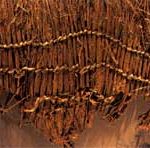
Congruity in Iron Age Art
The European Iron Age is a sub-period that marks the transition from prehistoric time to historic time. Ironwork is believed to have been introduced to Europe from Caucasian settlers during the late 11th century B.C. This is important to note,…

19th Century Enclosure Movement
The “enclosure movement” in the 19th century encouraged a large demographic migration of people from the English countryside to city centers, speeding up urbanization. Enclosure is the process of converting land from public ownership to private ownership through capital acquisition….
The Earliest Enlightened Thinkers
Based on archaeological evidence the Neolithic peoples can, in a variety of ways, be considered enlightened thinkers. Construction of the Thinker of Cernavoda (unknown artist, around 5,000 BC, http://www.visual-arts-cork.com/sculpture/thinker-of-cernavoda.htm) itself took some knowledge and understanding of materials, tools and dimension…

Jack the Ripper’s Canonical Murders
“Jack the Ripper” is the nickname attributed to the 1888 serial killer who was briefly active in Whitechapel, London. The murderer was never caught, and their identity is still disputed; in fact, there remains a lot of mystery about the…
Week 1
Hi! I have changed the theme yet again – haven’t been happy with any yet. Let me know what you think? OK, for Week 1 we have an introductory post, and one other about what topic(s) you’re interested in exploring.

Fashion of the Paleolithic/Neolithic periods
Paleolithic peoples would have worn and worked with materials that required very little assembly, preparation and maintenance due to a comparatively low intellect, nomadism, knowledge of construction, tools and I’m sure a number of other factors. The common themes among…
Introduction
Hi Nathan. My name is Van and I am an international business student and this is my last year at MiraCosta. One of the school to which I applying is UCLA, in their business economics program. Along with all of…

Recent Comments